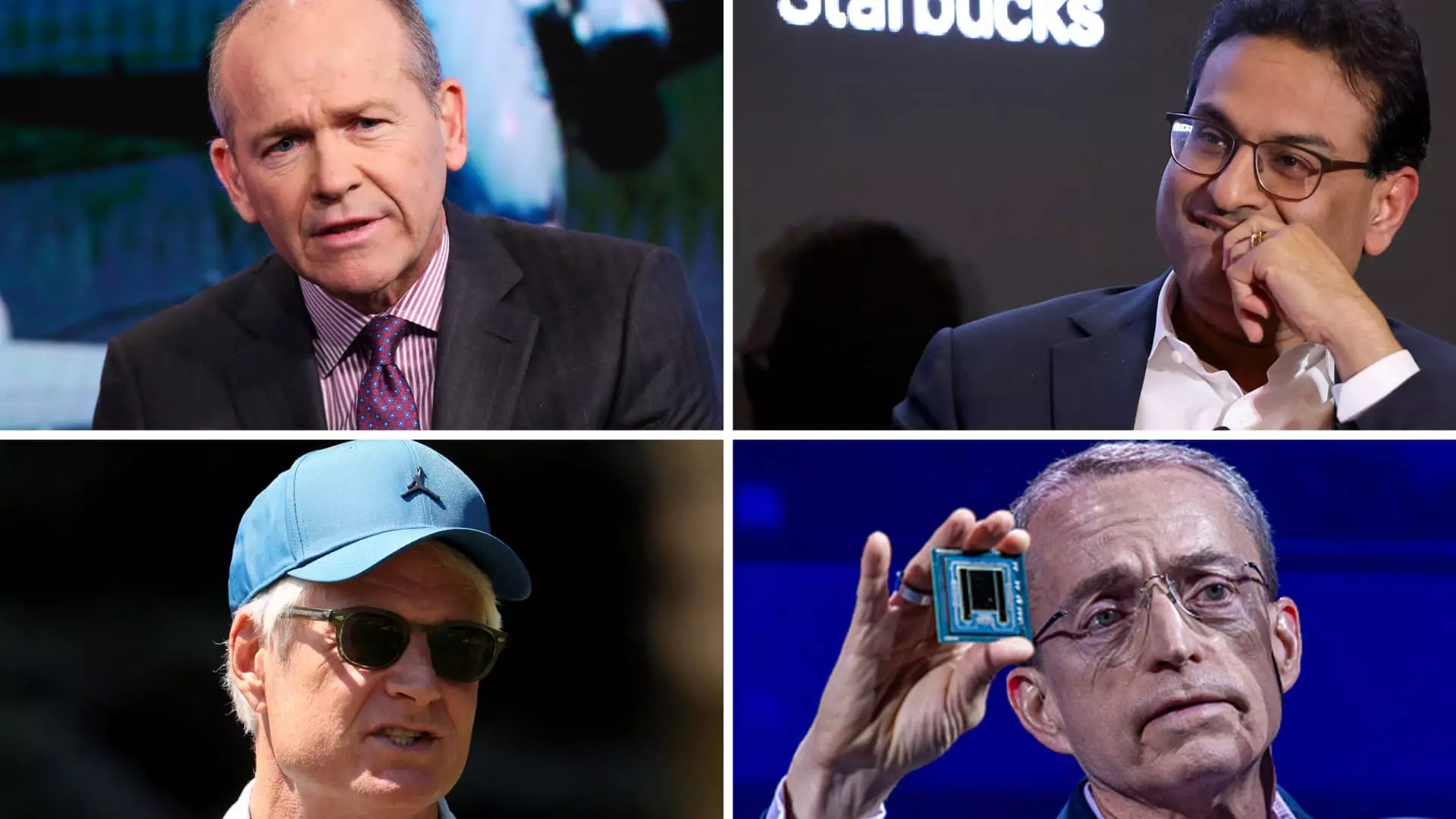In 2023, the landscape of corporate leadership in the United States experienced a seismic shift as 327 CEOs were replaced—marking the highest turnover recorded since 2010. This represents an 8.6% increase compared to the previous year and includes high-profile exits from long-standing industry leaders such as Boeing, Nike, and Starbucks. This turnover is indicative not just of individual companies’ struggles but also reflects broader market pressures that are reshaping the expectations placed on CEOs by stakeholders, including customers, investors, and boards of directors.
The surge in CEO changes contrasts starkly with the earlier years of the pandemic when corporate leadership remained relatively stable in the face of unprecedented challenges like remote work and supply chain disruptions. With the economy slowly recovering and consumer spending increasing, stakeholders are less tolerant of underperformance. According to Clarke Murphy of Russell Reynolds Associates, the escalating pace of digital transformation and the rising costs of capital contribute to a climate of heightened scrutiny for CEOs. When the S&P 500 recorded growth exceeding 20% over consecutive years, companies that fell short of expectations became targets for swift leadership changes.
These recent changes highlight a significant trend among consumer-oriented firms, which are particularly vulnerable to shifting consumer preferences. Unlike industries such as oil and utilities, where leadership is often more stable and tenured, consumer businesses face relentless public accountability in our fast-paced digital economy. The volatility in corporate leadership isn’t occurring in a vacuum; it mirrors the fluctuating demands and evolving preferences of consumers.
Several prominent case studies stand out in understanding the dynamics at play in 2023’s CEO turnover. For instance, Intel’s high-profile ousting of CEO Pat Gelsinger underscores the brutal game of catch-up in the semiconductor industry. Gelsinger’s tenure, marked by expectations of revamping Intel’s competitiveness against emerging rivals like Nvidia, ultimately fell short as the company struggled during the artificial intelligence boom. The aforementioned struggle not only diminished Intel’s market share but also highlighted the urgency for tech companies to adapt quickly to disruptive trends.
Moreover, Boeing’s leadership shake-up following another safety incident further emphasizes the stakes involved in maintaining public trust. Dave Calhoun’s departure was not just a response to the fallout of a safety crisis; it highlighted Boeing’s broader challenges with quality and operational integrity that have plagued the company since earlier controversies involving their 737 Max model. With Kelly Ortberg stepping in, Boeing’s leadership is now focused on instilling stability and addressing long-standing operational challenges amidst labor strikes and economic uncertainties.
Starbucks’ recent decision to bring in Brian Niccol from Chipotle to resuscitate its brand demonstrates the aggressive moves being made in highly competitive sectors. Niccol’s appointment came at a crucial time when Starbucks had to regain market share and consumer loyalty amidst sluggish sales. His game plan emphasizes a return to fundamental values, such as elevating customer experience and streamlining the menu—moves aimed at rekindling the magic that once defined Starbucks as a pioneer in the coffeehouse industry.
In another notable venture, Chipotle appointed an internal veteran, Scott Boatwright, to lead the company during this critical transition, showcasing an ongoing trend where firms are increasingly investing in leaders with deep industry knowledge and experience. This layout indicates a strategic shift toward stability and experience in navigating turbulent corporate waters.
2023’s wave of leadership changes forces a reevaluation of how public companies approach executive roles. The recurring theme appears to be a relentless push for innovation and adaptability in an era where consumer preferences evolve at lightning speed. Indeed, the survival of these companies amid external pressures requires not just strategic foresight but a willingness to embrace swift leadership transitions when the internal metrics no longer align with market expectations.
As we move forward, the question remains: will companies find the right leaders who can navigate the complexities of the modern marketplace? Or will the cycle of turnover continue, driven by the relentless pursuit of performance and shareholder value? Time will tell whether this trend represents a momentary spike due to exceptional circumstances or a new norm in corporate governance, where agility and adaptability are prized above all.
The turnover of corporate leaders in 2023 signals a transformative year that leaves an indelible mark on the future of American businesses. The evolving complexities of the corporate world demand leaders with a visionary approach, capable of steering their companies through the tumultuous waters of market change.

